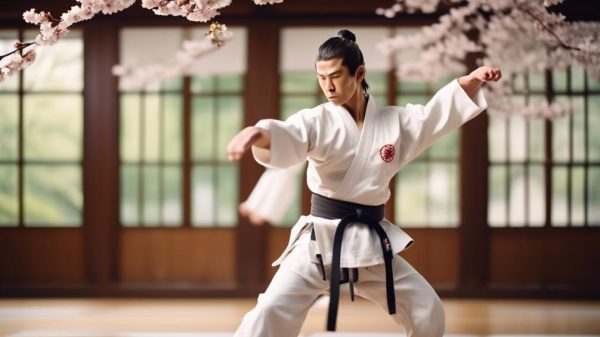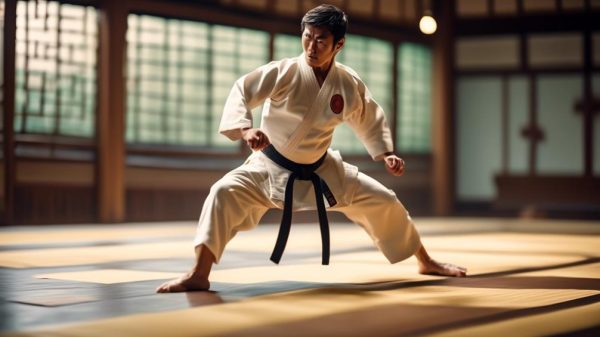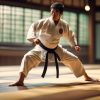Kicking bags are essential for martial artists to condition legs, rehearse combinations, and develop power.
Unlike punching bags, kick bags absorb more force given stronger legs and hip rotation driving kicks.
This article explores kicking bag varieties, holding solutions, and impactful drills to integrate into training.
We’ll guide purchasing factors to match needs for competition or home workouts. Browse hanging options from ceiling mounts to free standing bag stands that lend stability.
Then learn versatile kicking combinations and targeting exercises suited for Taekwondo, Muay Thai, or MMA kicking prowess.
With feedback on strikes, kicking bags transform technique, stamina, and precision.
Key Takeaways
- Kicking bags build leg strength and hip flexibility to unleash fierce kicks
- Consider surface, size, weight and material that can handle abuse
- Hanging heavy bags requires reinforced stability from quality stands
- Double-end bags and free-standing mannequin bags offer striking variability
- Condition shins slowly before adding full power leg kicks
- Set up combinations mixing angles, levels and strikes between kicks
- Develop accuracy striking specific defensive points on mannequins
- recorded sessions give feedback to correct mechanics and maximize impact
Selecting the Right Kicking Bag
Choosing the right kicking bag requires careful consideration to ensure it matches your strength, skill level, and martial arts goals.
The weight of the bag plays a crucial role in determining the intensity of your training. A heavier bag will test your power and endurance, while a lighter one may enhance your speed and technique.
Your gender and specific physical requirements influence the choice between men’s, women’s, or unisex bags, each tailored to meet the unique demands of your body and martial arts training.
The type of bag you choose, whether it’s a freestanding unit for flexibility, a heavy bag for building striking power, or a boxing glove bag for precision work, is essential for aligning your practice with your objectives.
Explore the range of training bag types, from the dynamic Wavemaster to the resilient BOB, and the classic heavy bags, to find the one that aligns with your martial arts ethos.
Size is also a critical factor; selecting a bag ranging from 25lbs to 100lbs will help scale your training regimen appropriately. Choose your equipment wisely to meet the demands of your practice.
Fundamental Kicking Techniques
Mastering the essential kicking techniques, including the front kick, roundhouse kick, side kick, and back kick, forms the foundation of your martial arts skills.
These techniques require not only strength and agility but also exceptional balance and precise body mechanics.
Each martial arts move, from the snap of a front kick to the sweeping arc of a roundhouse, demands the use of proper technique to harness power and maintain control.
To prevent injuries and ensure a thorough understanding of these techniques, your training should focus on ingraining these movements into your muscle memory. This isn’t just about repetition but also about refinement.
Each kick should demonstrate a perfected technique, executed with precision that’s both effective and awe-inspiring.
Exercises should be supervised by a trained instructor, who’ll guide you in the subtleties of hip rotation and foot positioning—crucial elements that transform a mediocre kick into a masterful strike.
Consistent practice, combined with the watchful eye of your martial arts instructor, will solidify these foundational skills.
Advanced Kicking Drills
Enhance your martial arts skills by incorporating advanced kicking drills into your training routine.
These drills, crafted by experienced martial arts trainers, will push you past the basics and test your abilities.
Engage in intricate combinations and footwork patterns to refine your technique and elevate your mastery of martial arts.
Advanced drills not only improve your kicking proficiency but also strengthen your balance and coordination.
To avoid injuries and augment your training, utilize a variety of equipment such as kicking shields, focus mitts, and heavy bags. These tools offer the necessary resistance for developing explosive power in your kicks.
Here’s a table outlining different drills and their associated benefits for martial arts students to enhance their skills:
| Drill Type | Target Skill | Equipment Used |
|---|---|---|
| Spinning Kicks | Agility, Power | Heavy Bag |
| Jumping Kicks | Explosiveness | Kicking Shield |
| Multiple Kicks in Succession | Endurance, Speed | Focus Mitts |
| Kicking Combinations | Precision, Flow | Heavy Bag |
Incorporate these drills into your regular practice and study instructional videos from experts to perfect your movements.
With dedication and passion, advance your martial arts techniques and training to new levels.
Caring for Your Kicking Bag
To ensure your kicking bag remains a steadfast partner in your martial arts journey, it’s essential to provide it with meticulous care and maintenance.
Your kicking bag isn’t just a tool; it’s an integral part of your martial arts conditioning program, bearing the brunt of your dedication to mastering arts techniques and exercises.
Here’s how you can protect this ally:
- Location & Storage
- Envision the perfect spot: dry and cool, a sanctuary from mold and the relentless heat that could sap its strength.
- Cleaning Ritual
- Imagine each wipe of the damp cloth as a renewal, stripping away the grime of intense sessions, the sweat that marks your progress.
- Regular Inspections
- See yourself as the guardian, vigilant for any battle scars—frays or tears that speak of valor but require your attention.
Measuring Progress and Goals
Every martial artist’s journey is marked by the milestones they set, and measuring your progress through well-defined goals is crucial to your growth and mastery.
You need to learn to set specific short-term and long-term targets, creating a roadmap for your advancement.
By doing so, you not only track improvements in strength, flexibility, and technique but also fuel your passion to surpass each new challenge.
Use a training journal or a fitness app to meticulously monitor your development. These tools aren’t just records; they’re reflections of your dedication, great tools to supplement the instruction given by your arts instructor.
Remember, arts books are great, but they’re meant only to reinforce and supplement your learning. They’re there to help correct your mistakes and ensure your techniques are precise, in order to prevent injuries.
Regular check-ins with your instructor are essential. Their expertise will help you assess your progress and set new benchmarks.
Celebrate every achievement, no matter how small, and allow these victories to motivate you further.
Your instructor’s feedback is invaluable; it’s a compass that guides you towards excellence, helping reinforce and supplement your self-training.
Stay focused on measuring progress and goals, and watch as you transform into the martial artist you aspire to be.









